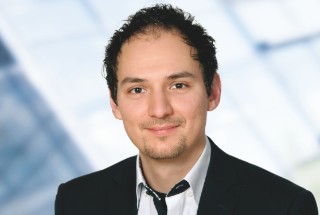1. What inspires your research and what opportunities do you want to tap into?
Many drugs and vaccines require special formulations for effective administration. One of the biggest challenges in drug formulation is balancing stability and bioavailability. Many highly potent drugs fail during clinical development because they either break down too quickly in the body or are ineffective at reaching their target.
We see enormous potential in our glycobiotechnology approaches. The targeted use of sugar molecules with special charge properties or the ability to interact in a specific way with cell receptors opens up new ways to precisely transport active ingredients. Using innovative formulation strategies we are able to advance medical research and therapeutic applications in a decisive way – because a well-designed formulation is the key to safer, more effective therapies and a sustainable improvement in healthcare.
2. What successes or insights from your work to date make you feel particularly optimistic? What exciting challenges are on the horizon?
One particularly exciting success was our contribution to the project “Vaccine against asthma – mucosal application of RSV antigens to prevent juvenile bronchial asthma” (MucoRSV), which was coordinated by Fraunhofer IZI as part of the Fraunhofer Cluster of Excellence Immune-Mediated Diseases (CIMD). At Fraunhofer IAP, we used special lipids to formulate inactivated respiratory syncytial viruses (RSV) which cause respiratory infections. This method triggered a strong immune response in mice, indicating promising vaccine protection against RSV. What makes this vaccine special is that it is administered through mucous membranes. As a result, it protects directly at the spot where the virus enters the body – a promising approach, especially for vulnerable groups such as infants and the elderly. The findings were published in 2024 in the journal Frontiers in Immunology.
Strengthening mucosal immunity as the first line of defense against pathogens could provide the key to combating numerous infectious diseases. For example, in the CIMD project “Mucosally applied, LEEI-inactivated parasites for the treatment of allergies,” we are working with the Fraunhofer institutes IZI, FEP, IPA, and ITEM to develop a formulation for allergy prevention that contains inactivated parasites. The challenge here is to maintain or enhance the immunostimulatory properties in order to obtain a preventive effect against allergic reactions.
Another highlight is the significant progress we have made in the use of modified polymers for DNA/RNA transfection – a method used to introduce genetic material into cells in a targeted manner. To this end, we have modified polymers with sugar structures to adjust their charges and hydrophilicity while enabling selective interaction with cell receptors and lectins. These enable a more efficient and compatible formulation for the uptake of DNA or RNA into the cell. Now the next challenge is to test this technology in realistic models such as organoids, i.e., organ-like microstructures, or tissue slices. To do this, we are working closely with the Fraunhofer institutes ITEM and ISC as part of the CIMD platform for RNA therapeutics.
3. Where could your research have a concrete impact in the future?
Our work with sugar-modified polymers could pave the way for the next generation of formulations for vaccines and RNA therapeutics. COVID-19 vaccine development has impressively demonstrated the potential of RNA-based treatments. However, more efficient formulation strategies are needed to extend this technology to other diseases – an area where we can make an important contribution.
A significant step will be the successful transfection of organoids and tissue slices. These three-dimensional cell culture models replicate the complexity of human tissue much better than conventional 2D cell cultures and could therefore significantly improve the predictive power of preclinical studies. These findings are particularly valuable because they allow us to develop more realistic test systems that will help us put new treatments – for example, for fibrosis or cancer – into clinical use more quickly and safely.
Our work can also make a decisive contribution to allergy prevention. The use of inactivated parasites as immunomodulators could open up new ways of training the immune system at an early stage and reducing the risk of allergies. Given the increasing prevalence of allergies in industrialized countries, this could make a great difference for public health.
4. In closing, do you have any insights, thoughts, or perspectives you would like to share with the professional community or the public?
Drug formulation is often overshadowed by the discovery of new active ingredients, yet it can sometimes be the key to turning a promising substance into an effective drug. The developments at Fraunhofer IAP show that innovative formulation strategies could open up new therapeutic possibilities. Interdisciplinary collaboration and close cooperation with partners are extremely important in this context. Combining different areas of expertise creates synergies that are essential for groundbreaking innovations.
As scientists at Fraunhofer, we are tasked with actively putting our findings into practice. Societal challenges – be it combating infectious diseases or the increasing prevalence of allergies – require bold and innovative solutions. Our expertise in drug formulation at Fraunhofer IAP enables us to make a significant contribution to this and we invite all interested partners from science and industry to work with us on these exciting topics of the future.
